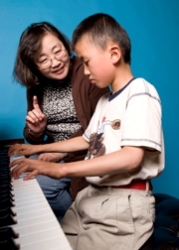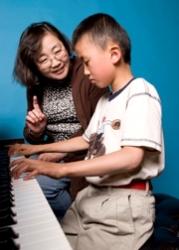
Introducing the Basics
The most important goals of a program are to introduce young students to the basic elements of music: melody, rhythm, sound quality, harmonics, and pitch. Physical technique should be taught as part of making good music, not just muscle training. The same could be said about integrating the practice and theory of music into a program.
Learning to Listen
It is crucial that the child learns how to hear her/himself play, identify when something isn’t right, and know what to do to make it better. Therefore, students should learn how to practice, so the time in between lessons is productive and rewarding, even exciting. It will definitely help the young learner to choose pieces that are engaging.
Parental Support
Your support and encouragement for your child is critical to his/her progress in the study of music. For example, the instrument is kept in good repair, the family knows the practice assignments and expectations, the music is in good order, and the lessons are attended on time. Children should hear live music (age appropriate), and whenever possible, sing together. If you can, play together. Be a good audience. And talk from time to time with your child’s teacher about musical goals, practicing, and any other related subjects helpful to making music study a positive experience.
Play Well with Others
In the best of musical worlds, students experience playing with others sooner rather than later. Sometimes this can be with the teacher. But playing with peers is a special experience, including accompanying other instruments, which requires a unique kind of listening skill.
Finally, a good music education program is one where the joy of music is part of the experience. Hopefully, music learning never becomes just another chore or obligation, but is part of a richer life.

